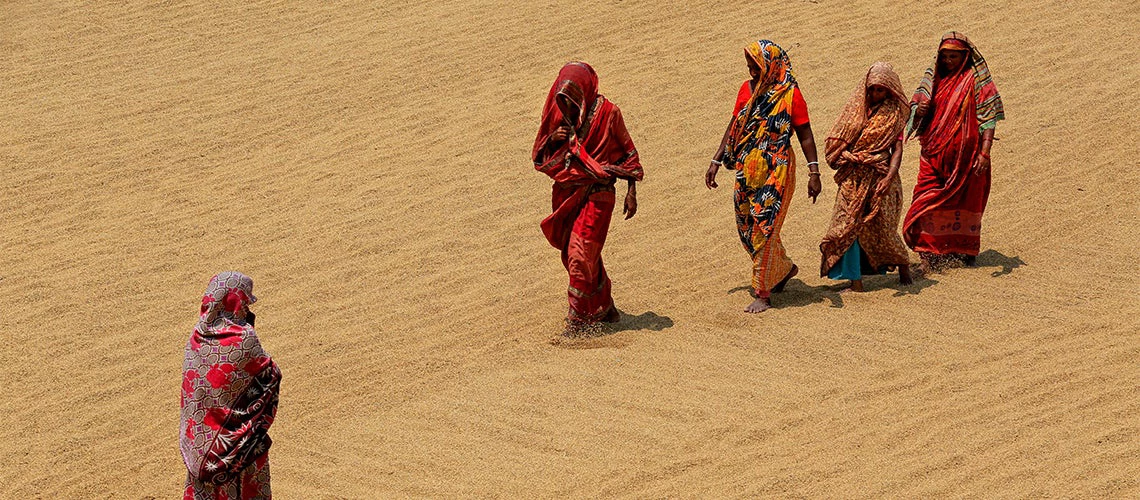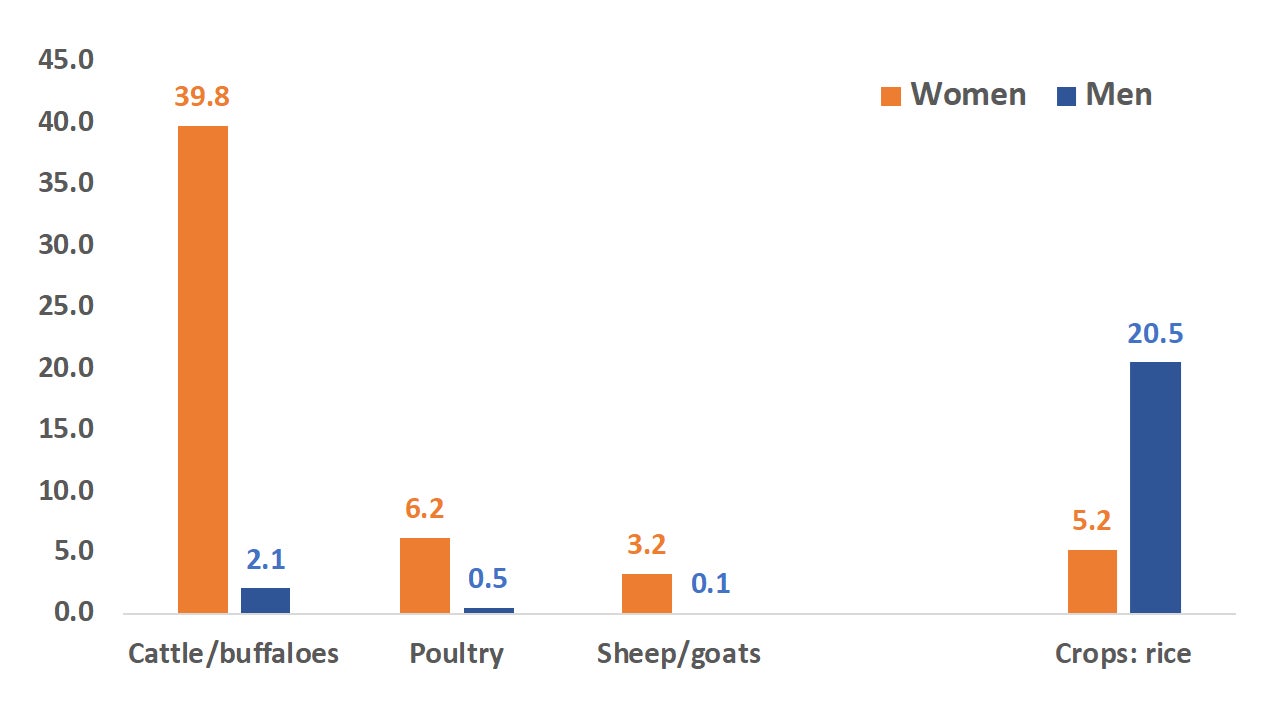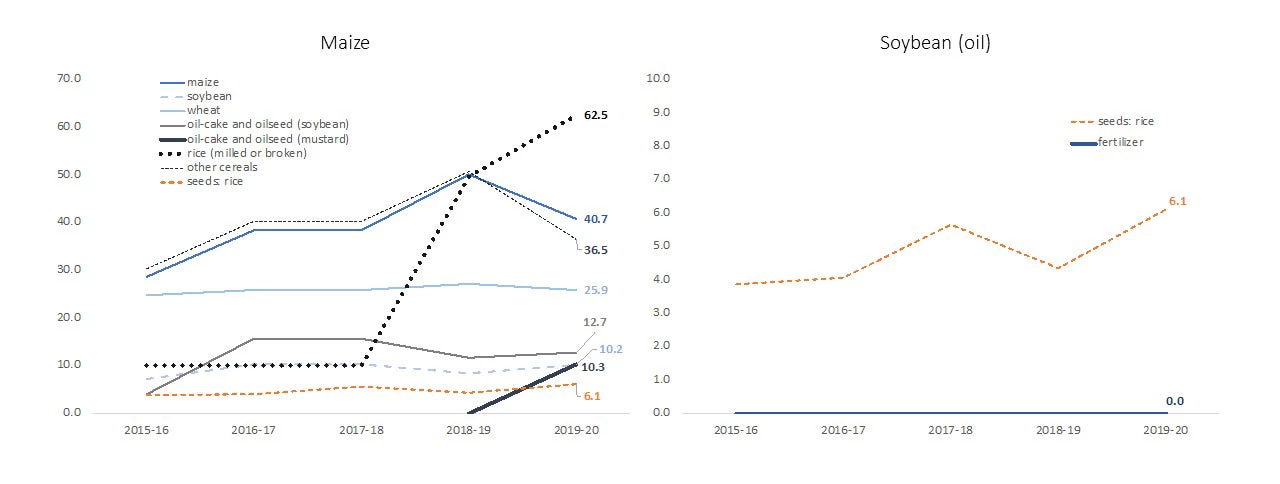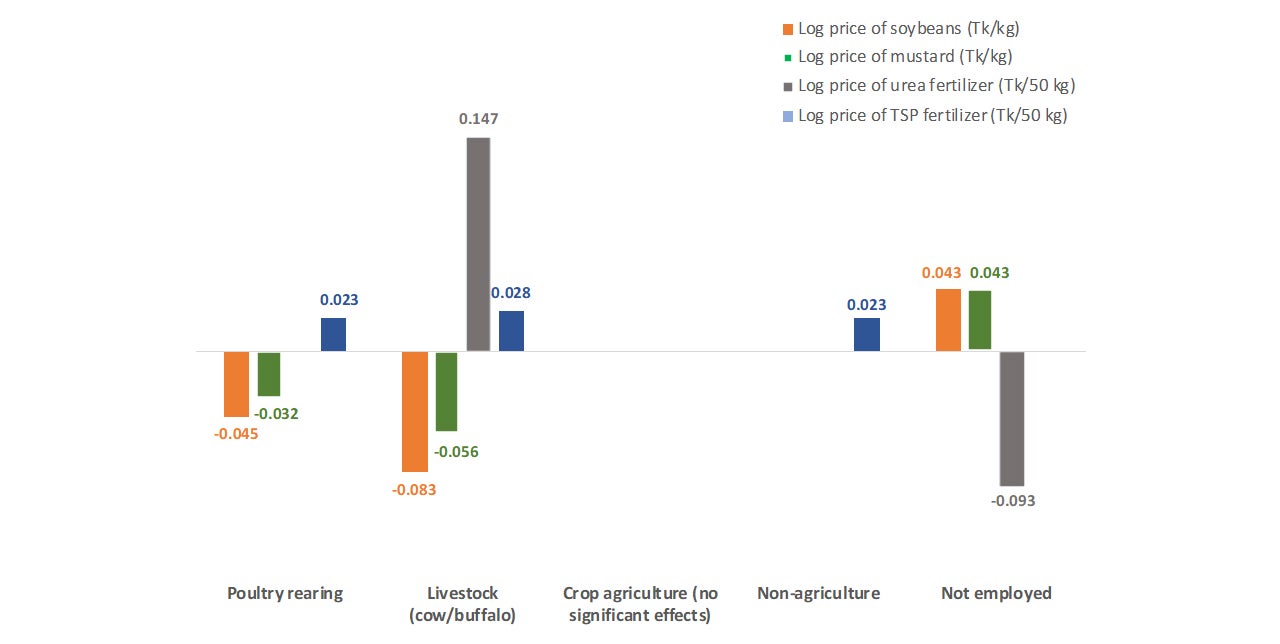 Agricultural import tariffs can have detrimental effects on the employment and earnings of rural women employed in the agricultural sector of Bangladesh.
Agricultural import tariffs can have detrimental effects on the employment and earnings of rural women employed in the agricultural sector of Bangladesh.
Trade barriers can affect employment outcomes of men and women differently, particularly in countries where working men and women are concentrated in different sectors.
A new World Bank study from Bangladesh, supported by the Gender Equality and Tax Reform project of the Global Tax Program, provides insights on how agricultural import tariffs can have detrimental effects on the employment and earnings of rural women employed in agriculture.
Cross-country estimates from the World Trade Organization and the World Bank show that tariffs on imported inputs tend to be higher in sectors employing more women, including food and beverage retail, and agriculture. However, evidence among low- and middle-income economies remains limited, including effects on women’s employment.
Bangladesh is an important context for examining this issue. Agriculture constitutes about a third of men’s employment and 60 percent of women’s employment — and the sector is highly dependent on imported inputs for livestock and crop agriculture. Bangladesh also has much higher average tariffs compared to other countries, and is preparing to modernize its tariff structure ahead of its planned graduation from Least Developed Country (LDC) status in 2026.
The findings of this new study are fourfold, revealing several potential links between rising input costs — stemming from tariff and subsidy policies, along with other factors — and men’s and women’s economic activities in agriculture:
1) Men and women work in markedly different areas of agriculture:
The Bangladesh Labor Force Survey shows that women and men in agricultural occupations work in very different activities — women are more likely to be concentrated in livestock and poultry rearing, mostly in a small-scale, self-employed capacity, while men are concentrated in crop agriculture.

2) Agriculture remains dependent on imported commodities subject to import tariffs:
More than 90 percent of seeds used in crop agriculture in Bangladesh are imported. Animal feed is almost entirely domestically produced, however, feed producers rely heavily on imported grains, including maize, soybean oilseed, and mustard.
Data from the Department of Agricultural Marketing (DAM) in Bangladesh shows that domestic wholesale and retail prices for many feed ingredients, including maize and soybean oil, have increased steadily since 2020 in line with global import prices. However, fertilizer used in crop agriculture is heavily subsidized, buffering the impact of higher global prices.

3) Import tariffs are higher on inputs for dairy and poultry farming activities, where women’s employment is concentrated:
Product-level customs data from the National Board of Revenue shows that the total tax rate (TTR) for key imported inputs used in animal feed is substantially higher than for crop agriculture. Imported seeds used in crop agriculture are subject to comparatively lower taxes, while the TTR for fertilizer is zero.

4) The higher resulting input prices are negatively associated with employment outcomes for women:
Using the 2018/19 Bangladesh Integrated Household Survey (BIHS), the study estimates the association between higher input prices — using price data in the community questionnaire — with individual-level outcomes collected in the BIHS across employment, borrowing and consumption.
The figure below presents results on women’s employment. Higher resulting prices for inputs used in poultry and livestock activity show a significant negative association with employment and earnings of the women who work in these areas.
Among those selling their production in the market, earnings in crop agriculture tend to be substantially higher than in livestock/poultry activity. Higher tariff rates for inputs for animal producers are likely to be particularly burdensome for poultry/livestock producers, most of whom are women.

These results underscore how agricultural tariff policies in Bangladesh are linked with significantly lower employment and earnings of rural women, given gender differences in economic activities within agriculture. Import tariffs higher in areas where women’s employment is concentrated, while subsidies on fertilizer primarily support areas where men’s employment is concentrated.
As Bangladesh revises its tariff policies ahead of its graduation from a Least Developed Country, it will be important to consider the potential benefits for employment outcomes, particularly for women. Informing policy formulation with gender analysis can help to clear a path to a higher level of income for women.
The findings also have implications for other countries. While women in lower-income contexts are disproportionately concentrated in informal occupations globally, the industries they tend to work in are often heavily dependent on imported natural resources and commodities, including within agriculture.



Join the Conversation